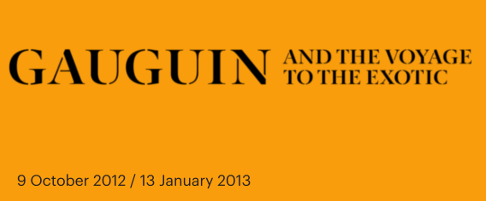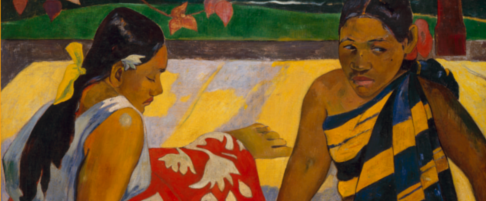Gauguin and the Voyage to the Exotic

Tahitian Paradise

Isolated from the world deep in Oceania, Gauguin eagerly set about depicting the dazzling nature setting and Maori culture—which was then dying out—in his particular synthetic style characterised by large areas of colour and a deeply symbolic and mythical content.

Paul Gauguin (1848 - 1903) Matamoe (Death. Landscape with Peacocks / Mort. Le Paysage aux paons)
- Año
- 1892.
- Técnica
- Oil on canvas. 115 x 86 cm.
- Propiedad
- The State Pushkin Museum of Fine Arts, Moscow. Russia. © The State Pushkin Museum of Fine Arts
In Gauguin’s canvases the wild exuberance of the island is transformed into a utopian Golden Age that existed before time began or a primordial Garden of Eden steeped in fragrances and explosions of colour. But Paradise and perdition were never far apart in the Tropics and, after his physical and mental health progressively deteriorated, Gauguin’s compositions became more mysterious and sinister. The yearned-for Tahitian paradise became Paradise lost.




